How to write and publish a poetry book?
It’s no secret that writing a book is a daunting task. But what about writing a poetry book? The process of putting together your poems, finding the right way of publishing, and marketing your finished product can be overwhelming as well.
However, with careful planning and execution, you can write and publish your poetry book – and here’s how.
- Why write a poetry book?
- The Foundation of Poetry
- What are the poetic devices poets can use?
- Understanding modern poetry
- Different themes of a poetry book
- What is a poetry chapbook?
- Full-length poetry books
- Choosing the theme of your poetry book
- How many poems can your book contain?
- Order the poems in your book
- Formatting your poetry book
- Editing your poetry
- Strategies for your poetry chapbook
- Publishing your poetry book
- Marketing and promoting your poetry book
Why write a poetry book?
Writing poetry is an outlet for self-expression, catharsis, and exploration of the writer’s mind. A poetry book can be a single voice or a collection of poems by different authors, each expressing themselves in various complexities and nuances. A poetry book can allow writers to explore topics that they may view as too difficult or delicate to express in other forms.
It is a way for them to share their thoughts and create tangible forms of poetry that other people can engage with and interpret to help reveal hidden meanings and understandings.
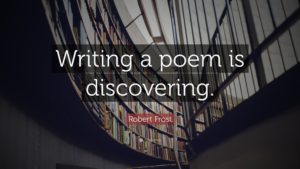
From political statements to relatable musings on life experiences, poetry has something for everyone – making it easier than ever before to have your story heard. A poetry book also provides writers with creative license to transcend traditional formats while remodeling language into creative designs often unconstrained by the rules of ordinary syntax.
Through this format, writers can directly access the emotions of their readers – creating a powerful connection between author and audience- something almost unheard of in any other kind of writing.
The Foundation of Poetry
Poetry has been an enigma puzzling minds for centuries, with its enigmatic and powerful use of words to express a range of emotions.
To the untrained eye, poetry can seem like a jumbled mess of unfathomable lines, but some basics form poetry’s foundation.
One of these basics is meter, which involves counting how many syllables are in each line. Additionally, poetry depends on punctuation as guidance for intonation and emphasis when reading poetry aloud.
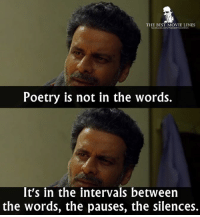
Furthermore, poetry relies on creative and specific word choices to accurately convey an emotion or mood. By understanding these fundamentals of poetry, readers can begin to adequately interpret the meant message that is behind each poet’s unique works of art.
What are the poetic devices poets can use?
Poets use poetry to express their ideas and feelings to inspire emotion in readers. To accomplish this, poets can use a variety of techniques to enhance the power of their words.
Poetic devices such as metaphor, simile, imagery, alliteration, and personification help create vivid images and descriptions that captivate an audience. By comparing one idea to another through metaphor or simile, poets draw attention to subtle nuances that bring poetry to life for readers.
Imagery helps paint pictures within poetry by evoking a strong emotional response.
Alliteration adds rhythm and flow while individually chosen words act as sensory triggers for the reader’s imagination.
Through personification, poems introduce living characteristics into inanimate objects so they become poetic characters. Together these poetry devices create a beautiful puzzle out of poetry that lives in our hearts and minds long after we’re done reading it.
Understanding modern poetry
Modern poetry has evolved from its roots in traditional verse and incorporated elements of performance, improvisation, sound experiments, media art, and multi-lingual composition to open doors to undiscovered beauty and new depths of emotion.
While it may be confusing to navigate this modern terrain, modern poets have found success in opening up possibilities by liberating themselves with innovative ways of crafting their work.
By becoming more accessible to a range of voices through modern poetic devices, modern poets are inviting people into previously unexplored fields of imagination and new opportunities for expression.
To some writers, the modern verse represents the ultimate freedom: allowing them to express their thoughts and feelings in a much more freewheeling fashion than before. With no particular structure or form expected, self-expression becomes much easier and the message can be felt with much greater vibrancy.
The lack of rules makes creativity run its course with fewer limits, enabling poets to feel liberated when it comes to self-expression – almost as if they can move freely within poetry’s blank canvas.
With this newfound freedom, writers can explore new depths of self-discovery and present it on paper or in recitals for others to experience.
Different themes of a poetry book
Exploring different themes in a poetry book can be an enlightening experience. Whether it’s learning about different cultures or different perspectives on life, no matter the differences we may have, it’s always interesting to discover different meanings and interpretations of everyday topics, ideas, and emotions.
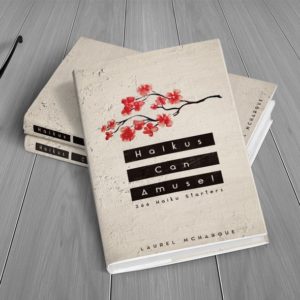
Poetry is a timeless way for authors to express stories and unique insights into life. Every reader can pick up different themes and inspirations from each poem within the pages of the book.
Whether it’s love, nature, culture, or faith, reading through different poems can be like painting a vivid picture of the common human experience that ties us all together.
What is a poetry chapbook?
A poetry chapbook is a small poetry book, typically containing between 15-50 pages of poems by one author.
Often produced in limited runs, poetry chapbooks offer a unique opportunity for writers to share their poetry without needing to go through the more lengthy and costly traditional publishing process.

As they can be self-published, poetry chapbooks allow poets to experience greater autonomy within their work and can be used as a stepping stone into larger publications.
Given that many writers may have their first poems published in a chapbook, there is an air of intimacy that surrounds the whole process, allowing for an audience to gain a deeper understanding of the author’s writing style and explore their innermost thoughts on paper.
Full-length poetry books
Full-length poetry books are collections of poetry that range anywhere from 100 pages to over 250. They usually contain multiple poetry pieces by one author or two different authors with a shared theme or subject matter.
Different than poetry chapbooks, full-length poetry books generally consist of poetry pieces that were first published as individual works in journals or anthologies and later collected and released into one volume.
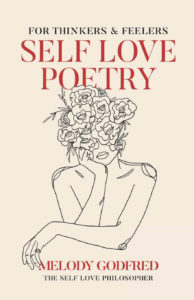
This style of poetry book allows the reader to get a comprehensive view of the author’s body of work throughout their publishing history, rather than the snapshot view offered in poetry chapbooks.
Both provide accessible ways for readers to source poetry, but the differences between them showcase how even within the same genre there can be so much variation between styles and topics.
Choosing the theme of your poetry book
When it comes to choosing the theme of your poetry book, it’s important to recognize that you can write about anything you want.
However, it’s helpful to have an idea or feeling that ties all the poetry together in some way. This will create a unified experience for the reader when they open up your poetry book.
When selecting a theme, ask yourself what topic or message you’d like to express, and then select pieces from your library of work or generate new content around this seed idea or concept.
As you craft each work, refer back to the main concept you’ve chosen and think about how that size fits into the body of work as a whole.
Crafting a poetry book is an exciting opportunity; take your time choosing a theme that reflects your perspective and accurately conveys what you intend readers to get out of their experience.
How many poems can your poetry book contain?
How many poems your poetry book should contain depends on factors such as the desired size and length of the poetry book, the type of poetry, and personal preference.
When determining the number of poems in your poetry book it’s important to keep balance and variation in mind so that readers have enough to read without becoming overwhelmed by an abundance of poetry.
As you decide what works best for your poetry book, take into account these variables so that each poem has space to stand out and still form part of a cohesive collection.
Order the poems in your book
When it comes to ordering poetry for a book, there are many different strategies one can choose from. One key factor in determining the flow and structure of your poetry book is selecting a theme.
This establishes a common thread that ties together each poem while also setting the tone for the overall reading experience.
Next, pay attention to the order of topics in each poem – the way they progress and how they build on one another to create a larger narrative.
Finally, consider which poems work well together on the page layout-wise; poetry often engages with its reader through visual elements like the typeface and white space.
Approaching poetry book curation with these strategies will allow you to create an artful and impactful collection of poems.
Formatting your poetry book
Formatting your poetry book is about more than just deciding on font size and paper choice. It’s about creating a flow and rhythm for the reader, easily readable for their enjoyment. When it comes to poetry, the presentation of the work can drastically change how it is interpreted.
The portrayal of your work
Furthermore, it’s important to think through how you want to portray your entire body of work in one poetry book. Decisions should be made based on the order you would like readers to read and interact with your poetry, beginning with an introduction or preface page and then into your poetry collection.

After that, consider creating a sectioning of each poem into its chapter as well as a typeface, paragraph format, and other design elements that fit both you and your poetry book’s purpose. Above all else, make sure you are consistent throughout and have respect for writers before you who paved the way in setting standards for poetry books everywhere.
Editing your poetry
Editing your poetry and refining your collection of poems for clarity and an enhanced reading experience can be a time-consuming yet rewarding process.
Begin by reading through each poem multiple times from various angles, editing for grammar or punctuation mistakes, and noting any confusing or unfocused writing that needs to be reworked.
Steps involved in editing your poetry book
There are several steps involved in editing: read through the poem out loud to make sure it reads, search for potential cliches and trite expressions that can be replaced with a more dynamic language, and check for flow by reading the poem from end to beginning, and lastly pay attention to line breaks, enjambment, and punctuation.
Every word of a poem should have a purpose and editing allows you to identify words or phrases that may be superfluous. Poetry editing requires a critical eye to ensure your work conveys its intended message. The editing process varies depending on where you are in the writing process.
Once the editing process is complete, refine the collection by reading your entire set of poems together to make sure that the poems fit together with an overall theme or style. In particular, focus on how each poem speaks to the next one for readers to gain more insight into its meaning. With some editing and refining, your poetry will become polished pieces that resonate with its readers on a deeper level.
Strategies for your poetry chapbook
Crafting a poetry chapbook is no easy feat. It takes thoughtful consideration, planning, and execution of clear strategies to bring your poetry chapbook to life.
My strategies focus on beginning with the poetry itself. I find it helpful to create a timeline that allows me to give each poem the attention it deserves and ensure my poetry collection is complete before entering into the other aspects of creating the poetry chapbook.
Once complete, I prioritize selecting my favorite pieces for the chapbook according to their storytelling, sound, and flow. Furthermore, I pay close attention to formatting and visual design as this will be key in bringing the poetry together as an interconnected body of work.
Finally, I like to research self-publishing options or publishing contests that showcase poetry that meets my style to have the best chance at success.
Publishing your poetry book
It is an incredibly rewarding experience to publish a poetry book, but oftentimes a daunting experience. To publish a poetry book, the first step is to identify your preferred publishing route. Do you want to pursue traditional publishing or self-publishing? To publish a poetry book traditionally typically involves submitting your manuscript to agents and publishers and awaiting feedback, or sometimes even solicitation if they reach out to you first.
Self-publishing on the other hand allows writers more control over every element of the publishing process, from selecting a publisher and deciding details like the cover design to marketing and selling the finished product online.
Self-publishing a poetry book can be a great way to release your work without having to go through a traditional publishing route. It will give you a lot of control over the design, marketing, and overall process including the launch of your book. Publishing a self-published poetry book requires self-discipline and demand, but it’s rewarding; to self-publish a poetry book is the way to go in terms of getting your words heard.
To publish a poetry book in this modern way, you need to be more mindful and dedicated. Make sure you’ve self-edited the content enough times so it’s ready for print; self-edit as much as necessary until you’re satisfied with the product and feel confident
Secondly, create a plan on how you’ll reach an audience; think about social media and other platforms where you can share your work. Lastly, pick an impactful title that garners attention from potential readers and includes keywords associated with the content of your poem – this will help capture more attention from search engines.
Through self-publishing, poets can have full creative freedom over their work and have the confidence to know their work is out there for readers to engage with on their own time and in the privacy of their own chosen spaces.
Many famous self-published poets have found success, including Rupi Kaur, who produces stunning and intimate poetry about relationships, empowerment, and the immigrant experience.

Another famous self-published poet is Elle Luna, whose thoughtful pieces on dealing with life’s challenges have made her work widely acclaimed.
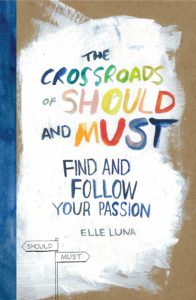
These famous self-published poets are proof of the power of self-publishing for those looking to get their voice out there.
Notion Press offers self-publishing services to authors and strives to democratize the sphere of publishing. Every story finds its voice with Notion Press. Aspiring authors can avail of numerous services in Notion Press including formatting their book, designing covers, distribution, and sales.
Marketing and promoting your poetry book
Marketing and promoting your poetry book can be a daunting task, but there are certain steps involved that will help ensure your marketing campaign is successful.
The first step is to establish an online presence by creating a website or blog dedicated to your work, connecting with others on social media, and using relevant hashtags within the poetry community.
Doing this will help your creative reach potential readers who may be interested in the content you have to offer. Next, reach out to those within the publishing industry such as agents, editors, and other authors, who can utilize their networks to promote you further.
Additionally, participate in relevant poetry events – both online and in-person – as these are great opportunities for you to make valuable industry connections and gain more awareness for yourself and your work.
Lastly, don’t be afraid to engage with industry professionals from which you may seek guidance or advice; engaging with these individuals could also provide insight into marketing strategies specific to poets.
All these steps together will build a marketing plan that puts your poetic writing out there in ways beyond what you thought were even possible!
Writing a poetry book and seeing it through to publication can be an intimidating but gratifying process. You may have a turbulent mix of emotions from excitement, anxiety, and even fear, but the result is worth it.
You will have embarked on a journey with immense potential that could change your life forever.
Whether you decide to write and self-publish, or go through a traditional publisher, keep in mind that any decision should reflect your artistic vision for your poetry book and embolden you to be the best version of yourself. Now that you understand what goes into writing and publishing a poetry book, why not start creating one today?

